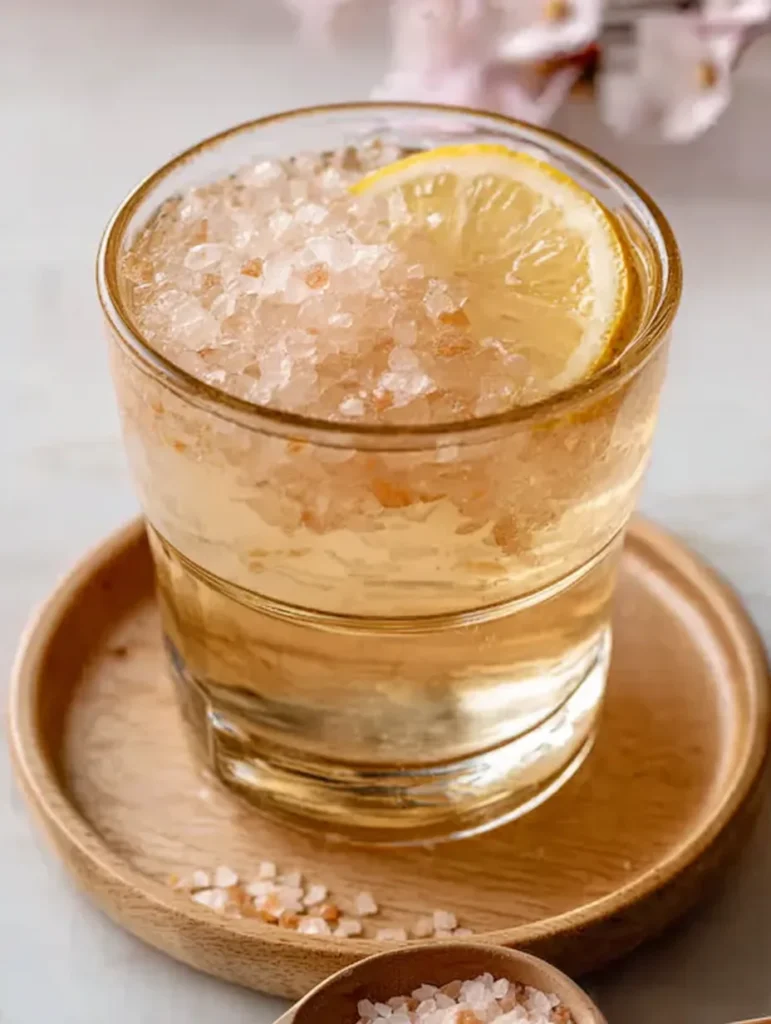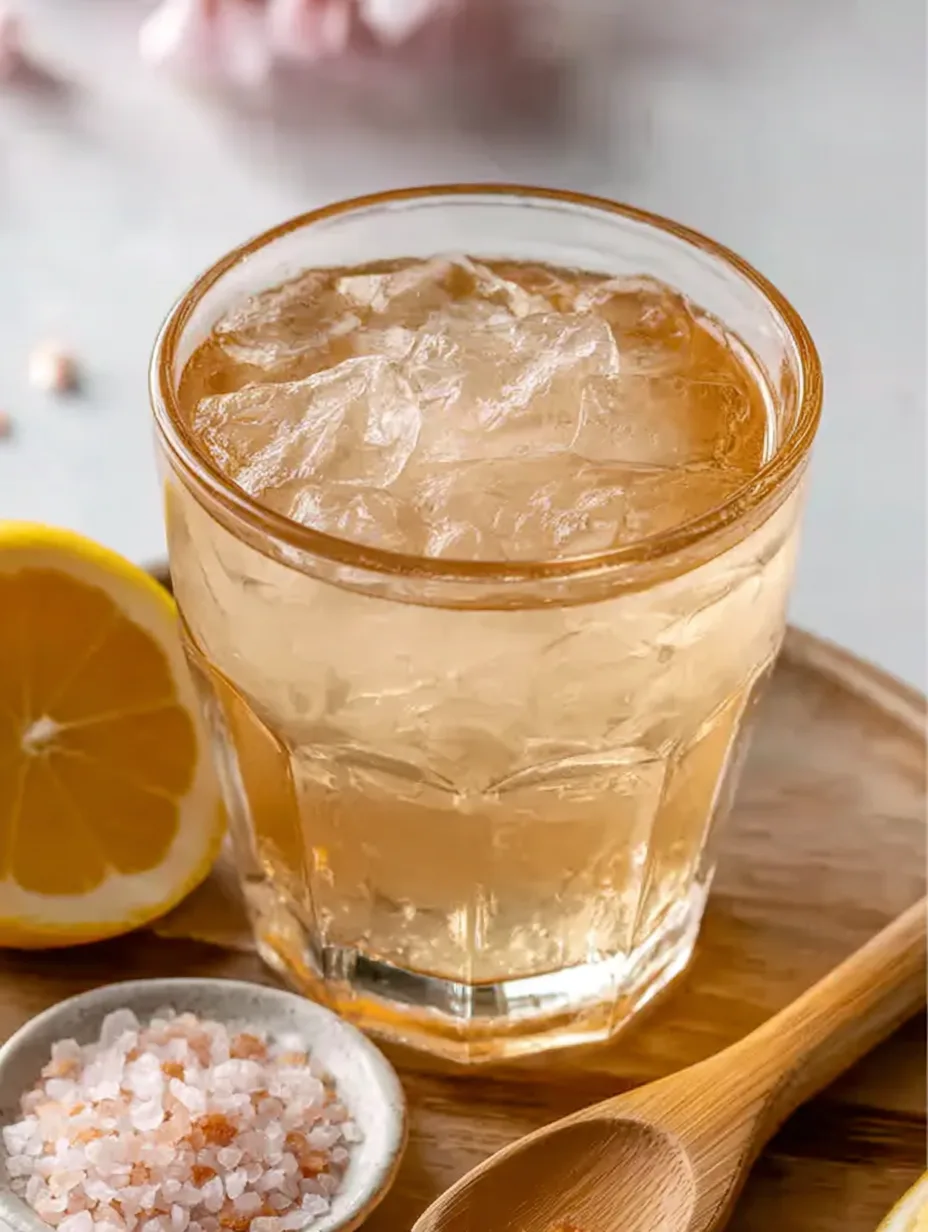You know that moment when you taste something so perfectly seasoned that you actually stop mid-chew and wonder what magical dust the chef sprinkled on your food? That’s exactly what happened to me the first time I encountered Japanese pink salt. Trust me, this isn’t your average table salt trying to look fancy with food coloring—this stuff is the real deal.
I stumbled upon this culinary gem during a particularly adventurous phase in my kitchen (you know, when you’re tired of your usual salt-and-pepper routine and desperately need something to jazz up your meals). What I discovered was a flavor profile so complex and satisfying that I literally started putting it on everything. And before you ask—no, I don’t have shares in a Japanese salt company 🙂

What Exactly Is Japanese Pink Salt?
Let’s clear something up right away: Japanese pink salt isn’t actually from Japan’s pink lakes or some mystical cherry blossom trees. The magic happens when you combine traditional sea salt with carefully selected Japanese ingredients that create this beautiful rosy hue and incredible flavor depth.
The most authentic versions typically include: • Shiso leaves (that’s where the pink color comes from) • High-quality sea salt (preferably from Japanese coastal regions) • Dried plum powder (ume) for that subtle tang • Sometimes a touch of red pepper flakes for heat
Ever wondered why Japanese cuisine always seems to hit that perfect balance of flavors? This salt blend is basically their secret weapon, and now you’re about to steal it for your own kitchen adventures.

The Science Behind the Pink Magic
Here’s where things get interesting. Shiso leaves contain natural anthocyanins—the same compounds that make blueberries blue and red cabbage, well, red. When you grind these leaves with salt, you’re not just adding color; you’re introducing a complex flavor that’s simultaneously minty, basil-like, and slightly spicy.
The umami factor kicks in thanks to the natural glutamates present in the aged ingredients. It’s like having MSG’s sophisticated, all-natural cousin that doesn’t give you a headache or make you question your life choices.
I learned this the hard way after my first attempt resulted in what I can only describe as “disappointingly gray salt with green specks.” Turns out, the drying and grinding process actually matters—who knew?
Essential Ingredients for Authentic Japanese Pink Salt
Primary Components
Fresh Shiso Leaves (Red Variety) You need about 20-25 fresh red shiso leaves. Green ones work too, but you’ll get more of a grayish tint instead of that Instagram-worthy pink. FYI, if you can’t find fresh shiso, some Asian markets sell dried versions, though the flavor won’t be quite as vibrant.
Coarse Sea Salt I recommend using 2 cups of high-quality sea salt. Don’t cheap out here—your taste buds will thank you later. Japanese sea salt is ideal, but Celtic or Himalayan works too. Just avoid table salt unless you want your gourmet creation to taste like a high school cafeteria.
Flavor Enhancers
Dried Ume (Pickled Plum) Powder About 2 tablespoons adds that signature tangy-sweet note. You can buy this ready-made or make your own by dehydrating pickled plums and grinding them up.
Optional Heat Elements • 1 teaspoon togarashi (Japanese seven spice) • ½ teaspoon dried red pepper flakes
Step-by-Step Japanese Pink Salt Recipe
Preparation Phase
Step 1: Shiso Preparation Wash your shiso leaves thoroughly and pat them completely dry. Seriously, any moisture will turn your salt into a clumpy mess that’s about as useful as a chocolate teapot. I learned this lesson after my first batch turned into pink salt concrete.
Step 2: Dehydration Process Spread the leaves on a dehydrator tray or use your oven at the lowest setting (around 170°F). This takes patience—about 2-3 hours until they’re crispy enough to crumble between your fingers.
The Grinding Magic
Step 3: Initial Grinding Use a spice grinder or mortar and pestle to pulverize the dried shiso leaves. You want a fine powder, not chunky bits that’ll get stuck in your teeth later.
Step 4: Salt Integration Gradually mix the shiso powder with your sea salt. Start with about 1 tablespoon of shiso powder per cup of salt and adjust to taste. The color should be a beautiful dusty rose—not hot pink like a unicorn sneezed on it.
Final Flavor Balancing
Step 5: Adding Complexity This is where you can get creative. Add your ume powder, togarashi, or whatever else strikes your fancy. Taste as you go—cooking should be fun, not a chemistry exam where you follow formulas blindly.
Step 6: Final Processing Give everything one last grind together to ensure even distribution. The final texture should be fine enough to sprinkle easily but not so powdery that it disappears the moment you open the container.
Pro Tips for Perfect Japanese Pink Salt
Storage Secrets
Store your creation in an airtight container away from direct sunlight. Glass jars work best because plastic can absorb flavors over time, and nobody wants their salt tasting like last week’s leftover container.
The salt keeps for about 6 months if stored properly, though IMO, it rarely lasts that long once you start using it on everything.
Usage Recommendations
Best Applications: • Grilled fish and seafood (this is where it truly shines) • Fresh vegetables and salads • Rice dishes and onigiri • Tempura and other fried foods • Avocado toast (yes, I went there) • Hydrating beverages (trust me on this one—it’s a game-changer)
Timing Matters Add this salt right before serving rather than during cooking. The delicate flavors can get lost if you add it too early, and you’ll end up wondering why you bothered making it in the first place.
The Surprising Beverage Application
Here’s something that’ll blow your mind: Japanese pink salt makes an incredible drink. I know, I know—drinking salt water sounds about as appealing as eating sand, but hear me out.
Japanese Pink Salt Hydration Drink: • 1 teaspoon Japanese pink salt • 2 cups water • 1 tablespoon honey • 1 tablespoon lemon juice • Ice cubes (optional)
Boil the water, let it cool slightly, then stir in the salt until dissolved. Add honey and lemon juice, and you’ve got yourself a homemade electrolyte drink that puts those neon sports drinks to shame.
The mineral content helps with hydration, the honey provides natural energy, and the lemon adds vitamin C. I started making this after particularly sweaty workouts, and honestly? It’s more refreshing than any store-bought alternative. Plus, you actually know what’s in it—revolutionary concept, right?
Common Mistakes to Avoid
Let me save you from the heartbreak I experienced during my learning curve:
Mistake #1: Using Wet Ingredients Any moisture will cause your salt to clump and potentially spoil. Make sure everything is bone dry before grinding.
Mistake #2: Over-Processing Don’t turn your beautiful salt into powder. You want some texture to remain for visual appeal and flavor release.
Mistake #3: Wrong Salt Choice Table salt with iodine will overpower the delicate shiso flavors. Stick with pure sea salt or rock salt.
Mistake #4: Storage Negligence Humidity is your enemy. One humid day without proper storage, and your masterpiece becomes a pink rock.
Variations and Creative Twists
Regional Adaptations
Kyoto Style: Add a touch of matcha powder for earthiness Okinawan Version: Include black sesame seeds for nutty complexity Modern Fusion: Mix in dried yuzu zest for citrusy brightness
Seasonal Modifications
Spring Version: Fresh cherry blossom petals (sakura) if you can get them Summer Twist: Add dried cucumber powder for cooling effect Autumn Blend: Include roasted chestnut powder Winter Warming: Extra togarashi and dried ginger
Health Benefits and Nutritional Value
Beyond tasting amazing, Japanese pink salt offers some legitimate health perks. Shiso leaves contain omega-3 fatty acids, antioxidants, and anti-inflammatory compounds. The sea salt provides essential minerals often stripped from processed table salt.
Of course, it’s still salt, so don’t go crazy thinking it’s a superfood supplement. But compared to regular table salt, you’re definitely upgrading your mineral intake while making your food taste exponentially better.
Where to Source Quality Ingredients
Online Resources: • Amazon has decent shiso options (though fresh is always better) • Japanese grocery stores often stock the specialty items • Some farmers markets carry shiso during growing season
Local Alternatives: If you can’t find authentic ingredients, experiment with local herbs. Purple basil creates a similar color effect, though the flavor profile differs significantly.
Final Thoughts: Your Culinary Game-Changer
Making your own Japanese pink salt transforms you from someone who just adds salt to food into someone who thoughtfully enhances flavors. It’s the difference between wearing a basic t-shirt and wearing one that actually fits well and makes you feel confident.
I’ve given jars of this stuff as gifts, and people genuinely get excited about it. There’s something deeply satisfying about creating something this beautiful and functional from simple ingredients.
So go ahead, make a batch, and prepare to become that friend who always brings the most interesting dishes to potlucks. Your taste buds (and your friends) will thank you for it. Just don’t blame me when you start putting it on your morning eggs—I warned you it’s addictive 🙂

Japanese Pink Salt Recipe
Equipment
- Dehydrator or oven
- Spice grinder or mortar and pestle
- Airtight storage container
- Mixing bowl
Ingredients
- 20-25 fresh red shiso leaves or dried if unavailable
- 2 cups coarse sea salt Japanese sea salt preferred
- 2 tablespoons dried ume pickled plum powder
- 1 teaspoon togarashi optional
- ½ teaspoon dried red pepper flakes optional
Instructions
- Prepare the Shiso Leaves:
- Wash shiso leaves thoroughly and pat completely dry. Ensure no moisture remains.
- Dehydrate Leaves:
- Spread leaves on a dehydrator tray or baking sheet. Dry at 170°F (lowest oven setting) for 2-3 hours until crisp.
- Grind Leaves:
- Use a spice grinder or mortar and pestle to grind dried shiso leaves into a fine powder.
- Mix Salt and Shiso:
- Gradually combine shiso powder with sea salt, starting with 1 tablespoon of powder per cup of salt. Adjust to your desired color and flavor intensity.
- Add Flavor Enhancers:
- Stir in ume powder, togarashi, and red pepper flakes if using. Mix well.
- Final Grinding:
- Give the entire mixture one last grind to ensure even distribution and a fine, sprinkle-friendly texture.
- Store:
- Place in an airtight glass container away from sunlight. Use within 6 months for best flavor.
